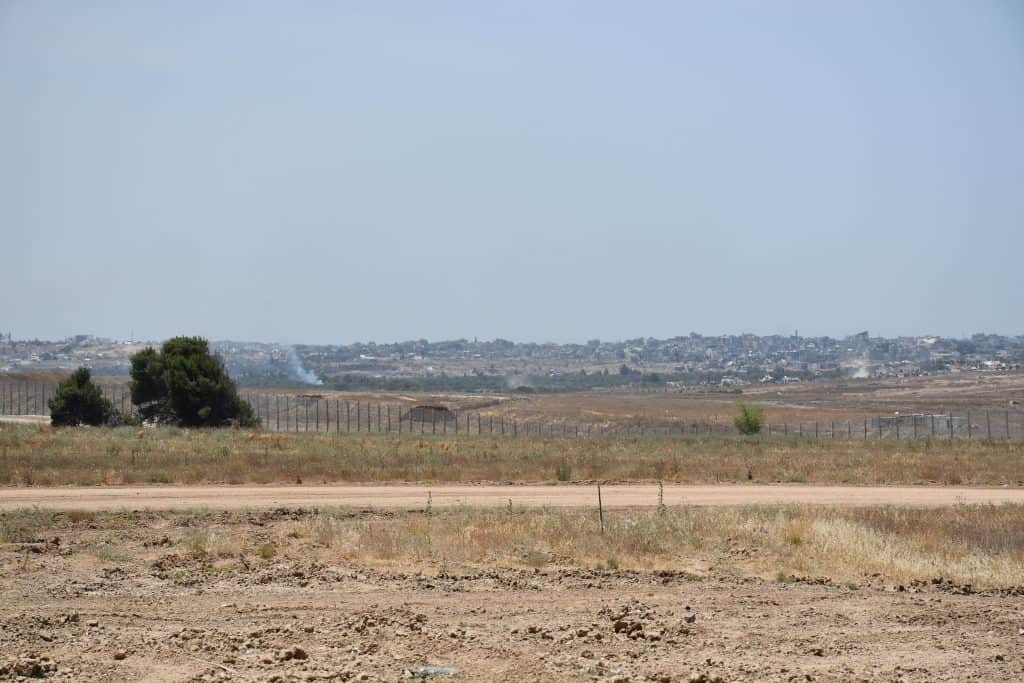
The Israel Defense Forces continued to advance in Rafah over the weekend. The forces, which include tanks backed by infantry and specialized units, found additional terrorist infrastructure including rocket launchers, explosives and tunnels. The operation took place as Hamas continued to target Israeli communities along the Gaza border and fire long-range rockets at Tel Aviv on May 26. The rocket fire was the first in several months to hit the city and proves that Hamas still has long-range rockets in Rafah. The rocket fire appeared to take place as the IDF approached the launch site, suggesting that Hamas terrorists fired the rockets because they thought the IDF would seize them.
The maneuver into built-up areas of Rafah included the use of unmanned M113 armored personnel carriers, which photos showed operating near the border with Egypt. Israel has thousands of old M113s from the 1960s, some of which have been repurposed in recent years for other uses. For instance, the Iron Sting precision mortar has been mounted on some of them. Using them as unmanned vehicles in Gaza enables them to be used in areas where they are vulnerable to mines or RPGs. Israel decided to finally replace the M113s in 2014, developing a wheeled APC called the Eitan. The IDF’s Nahal infantry were the first to train on the Eitan back in the fall of 2023 before the war. The new APCs were pressed into action on October 7 and in subsequent months. Israel also uses the Namer APC, a heavy, tracked vehicle that is based on a Merkava tank chassis.
IDF troops operated on the Philadelphi Corridor while conducting precise operational activity, the IDF said on May 28. “The activity is being conducted as efforts are continuing to be made in order to prevent harm to uninvolved civilians in the area. The troops are engaging with terrorists in close-quarters combat and locating terror tunnel shafts, weapons, and additional terrorist infrastructure in the area,” the IDF added.
The reference to preventing harm to civilians was emphasized in the wake of a strike on May 26 that killed civilians in an area north of Rafah. “Following the strike, due to unforeseen circumstances, a fire ignited tragically taking the lives of Gazan civilians nearby. Despite our efforts to minimize civilian casualties during the strike the fire that broke out was unexpected and unintended. This is a devastating incident which we did not expect. We are investigating what caused the fire that resulted in this tragic loss of life,” IDF Spokesperson Rear Admiral Daniel Hagari said on May 28.
The complexity of the operations in Rafah come as Hamas continues its attacks on Israeli border communities. The community of Mefalsim and Ein HaShlosha were targeted on May 28. On May 27, there were also attacks on Nahal Oz and Saad and the same area that was targeted on May 26. In general, terrorist groups in Gaza seem to conduct at least one attack each day to show that they still have the ability to strike Israel.
The IDF continued to operate in other parts of Gaza including Jabalya, a suburb of Gaza City in the northern part of the strip. “Over the past day, the troops dismantled terrorist infrastructure in the Jabaliya area, including terror tunnel shafts, observation posts, a weapons storage facility, and a military structure used by Hamas,” the IDF said.
In central Gaza, the IDF said it is “intensifying” operations and carrying out airstrikes. In the neighboring area of the Netzarim corridor, which stretches across Gaza, Israeli reserve infantry and armored units are still finding tunnels and other terrorist infrastructure despite seven months of controlling the area, the only such area of which Israel has maintained control throughout the war. Terrorists target IDF troops in the corridor primarily using threats such as snipers. The IDF troops deployed to the corridor, reservists who have served on and off for almost eight months of war, have had to adapt to these threats in Gaza after having previously been deployed in northern Israel to manage the Hezbollah threat.







